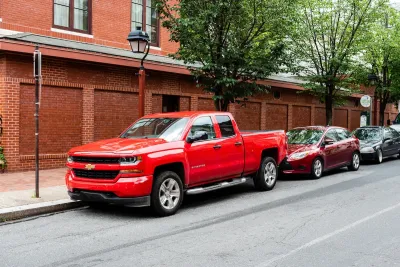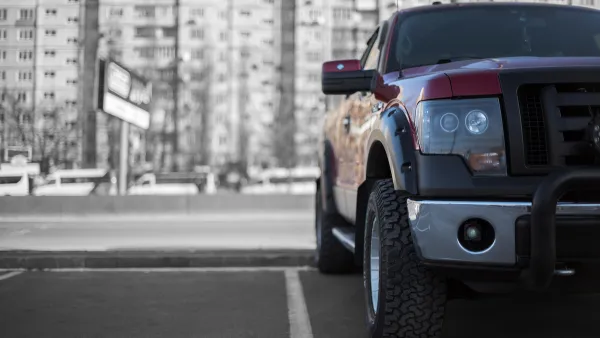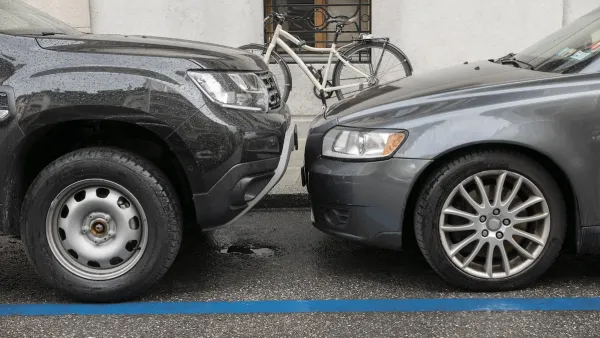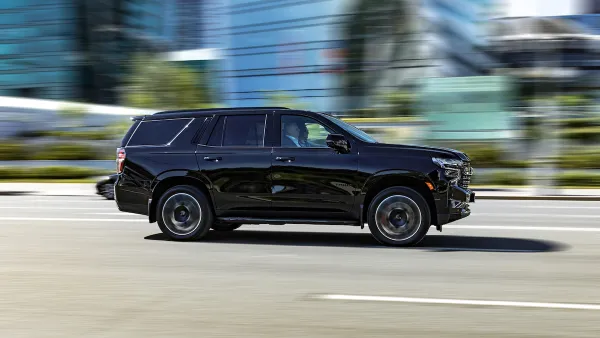A new study shows that modern safety features are more important than size and weight once vehicles weigh over 4,000 pounds.

The “bigger is safer” argument for large trucks and SUVs has reached a plateau, according to an analysis from the Insurance Institute for Highway Safety, which reveals that vehicles over 4,000 pounds don’t offer any significant safety benefits over lighter vehicles. For context, the average American car weighs 4,100 pounds, notes Kea Wilson in Streetsblog USA.
Although vehicle size and weight did, for a while, make a difference for safety, Wilson explains, “advances in other vehicle safety strategies like better front-end design and automatic emergency braking have increased the "crash compatibility" of average-sized vehicles, making the occupants of those cars more likely to survive being hit by the driver of a monster truck — though not necessarily sparing the lives of people outside cars when those drivers strike them.”
Meanwhile, safety continues to decrease for pedestrians and other people outside of the vehicles as vehicles get larger. Taller vehicles are more likely to strike people in the head or vital organs, while large cars and front ends can also obscure drivers’ visibility and perception of speed.
While Wilson acknowledges that “ regulators under President Trump are unlikely to mandate new safety updates to protect vulnerable road users,” many automakers are already voluntarily implementing changes, but pedestrian safety doesn’t always rank at the top of the upgrades list.
FULL STORY: Study: You’re Not That Much Safer In a 4,000+ Pound Car

National Parks Layoffs Will Cause Communities to Lose Billions
Thousands of essential park workers were laid off this week, just before the busy spring break season.

Retro-silient?: America’s First “Eco-burb,” The Woodlands Turns 50
A master-planned community north of Houston offers lessons on green infrastructure and resilient design, but falls short of its founder’s lofty affordability and walkability goals.

Delivering for America Plan Will Downgrade Mail Service in at Least 49.5 Percent of Zip Codes
Republican and Democrat lawmakers criticize the plan for its disproportionate negative impact on rural communities.

Test News Post 1
This is a summary

Test News Headline 46
Test for the image on the front page.

Balancing Bombs and Butterflies: How the National Guard Protects a Rare Species
The National Guard at Fort Indiantown Gap uses GIS technology and land management strategies to balance military training with conservation efforts, ensuring the survival of the rare eastern regal fritillary butterfly.
Urban Design for Planners 1: Software Tools
This six-course series explores essential urban design concepts using open source software and equips planners with the tools they need to participate fully in the urban design process.
Planning for Universal Design
Learn the tools for implementing Universal Design in planning regulations.
EMC Planning Group, Inc.
Planetizen
Planetizen
Mpact (formerly Rail~Volution)
Great Falls Development Authority, Inc.
HUDs Office of Policy Development and Research
NYU Wagner Graduate School of Public Service





























